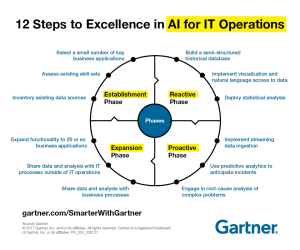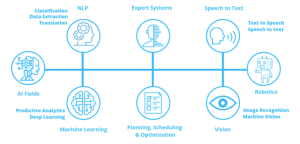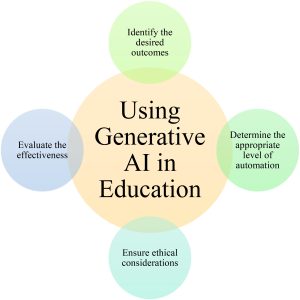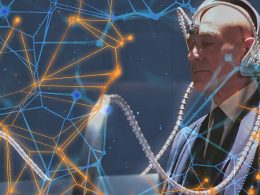Introduction
AI-driven innovations hold great potential for transforming L&D processes. The rapid creation of fresh learning resources, images, voiceovers, and micro-modules is made possible by generative AI like Chat GPT and other comparable technologies. This article discusses the intersection of generative AI and organizational adoption, highlighting key factors to be considered.
Learn About Generative AI and Its Operations.,
Machine learning’s generative branch focuses on producing fresh outputs like text, pictures, or noise. Ian Goodfellow and his collaborators developed GANs, a novel deep learning method in 2014. GANs consist of two neural networks: The generator produces content while the discriminator evaluates its accuracy. Networks engage in a contest with a fixed outcome, where advancement is achieved at another’s expense. The generator continuously generates material attempting to deceive the discriminator, whereas the discriminator strives to recognize authentic from fabricated content. The generator’s capabilities are augmented via a recursive learning path.

Examples of Generative AI
Chat GPT: OpenAI’s AI model Chat GPT utilizes abundant textual data from articles, books, and Wikipedia to generate language. The software can instantly generate remarkably consistent and factual content. Deep learning is leveraged by Chat GPT to produce expressive text tailored to specific objectives. User-provided texts spark the creation of genuine and pertinent responses. Augmented AI capabilities like Chat GPT can potentially transform knowledge transfer and development processes.,
MidJourney: The AI generates images inspired by given suggestions. Within a minute, MidJourney can transform natural language descriptions into corresponding image possibilities. This technology streamlines the process of developing visually appealing learning materials and creative concepts.

Murf: A speedy method for generating voiceovers in several tones and accents., User-defined language instructions enable tailoring the voice’s gender, accent, and delivery. Voiceovers can be created using this feature in learning modules, presentations, podcasts, and other assets.,
Codex: The versatile Codex AI can write code in over a dozen programming languages with incredible efficiency. This AI platform can turn verbal directives into functional code. L&D practitioners may now construct individualized learning scenarios with no need for programming abilities.
Generative AI and its Potential in Educational Settings
The capacity of generative AI to replicate human interaction might change the way professionals communicate with learners in the L&D field during client support and instructional scenarios. Innovative technology can boost content creation efficiency., Tailored learning resources, graphical tools, and voiceovers are among the creations AI can make for specific learners. Automation of content creation enables instructional designers to redirect their attention to more essential L&D components., improving workflow efficiency.

Considerations and Challenges
Generative AI presents both potential benefits and organizational challenges. Reliable and secure content generation is crucial. Enterprises should know about the conceivable prejudices in preparing information that may bring about incorrect or unfair yields. Continuous evaluation and adaptation are necessary to keep generative AI effective.,
Conclusion
Next-generation AI technologies such as ChatGPT unlock thrilling possibilities for Education and Skill Enhancement. Harnessing these technologies enables organizations to rapidly design engaging and dynamic learning content. Integrating generative AI necessitates close examination to guarantee that the created content is dependable, unprejudiced, and pertinent to the environment. Generative AI’s advancement will likely influence L&D, leading to novel approaches for skill acquisition.









